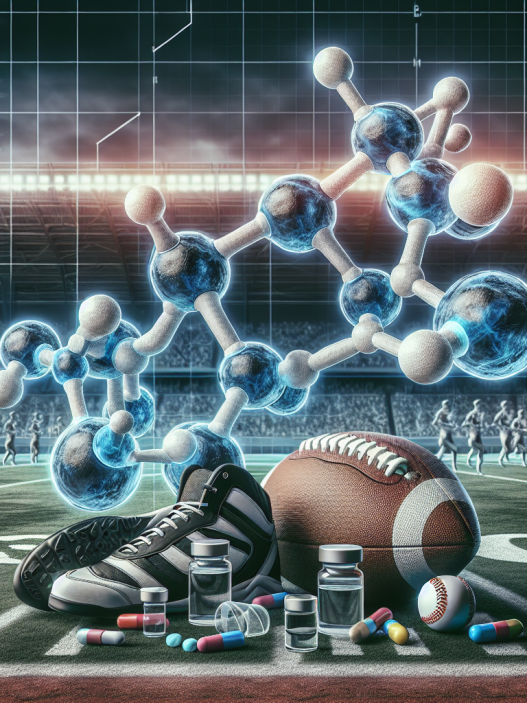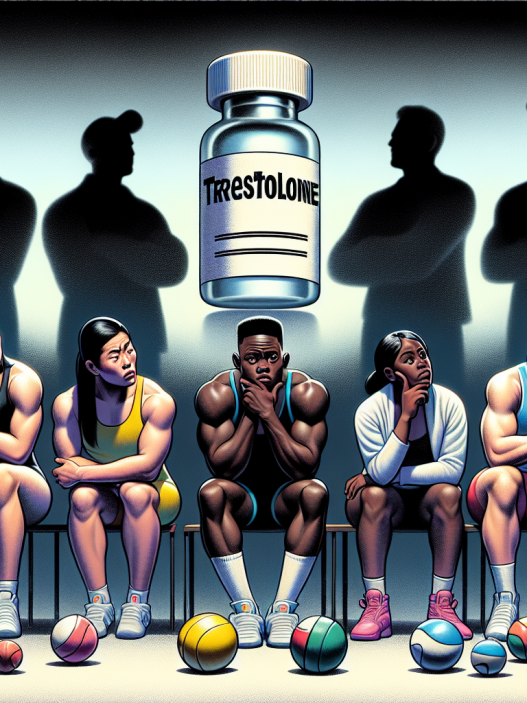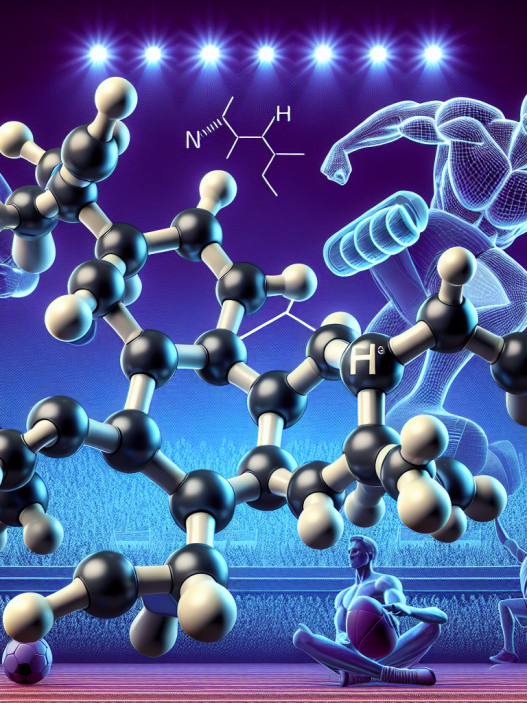-
Table of Contents
- The Use of Turinabol in Sports Pharmacology: Benefits and Risks
- The Benefits of Turinabol in Sports Pharmacology
- The Risks of Turinabol in Sports Pharmacology
- Pharmacokinetics and Pharmacodynamics of Turinabol
- Real-World Examples of Turinabol Use in Sports
- Expert Opinion on Turinabol Use in Sports Pharmacology
- References
The Use of Turinabol in Sports Pharmacology: Benefits and Risks
Sports pharmacology has become an integral part of modern-day sports, with athletes constantly seeking ways to enhance their performance and gain a competitive edge. One substance that has gained popularity in recent years is turinabol, also known as 4-chlorodehydromethyltestosterone. This oral anabolic steroid was first developed in the 1960s and has been used in various sports, including bodybuilding, weightlifting, and track and field events. In this article, we will explore the benefits and risks of using turinabol in sports pharmacology.
The Benefits of Turinabol in Sports Pharmacology
Turinabol is a modified form of the hormone testosterone, with an added chlorine atom at the fourth carbon position. This modification makes it less androgenic and more anabolic, meaning it has a higher potential for muscle growth and less potential for androgenic side effects such as hair loss and acne. This makes it an attractive option for athletes looking to improve their performance without the unwanted side effects of other anabolic steroids.
One of the main benefits of turinabol is its ability to increase muscle mass and strength. Studies have shown that it can significantly increase lean body mass and muscle strength in both trained and untrained individuals (Kazlauskas et al. 2016). This makes it a popular choice among bodybuilders and weightlifters who are looking to gain muscle mass and improve their performance in the gym.
Turinabol also has a relatively long half-life of 16 hours, meaning it can be taken once a day and still maintain stable blood levels. This makes it a convenient option for athletes who may have a busy training schedule and cannot afford to take multiple doses throughout the day.
Another benefit of turinabol is its low potential for water retention. This means that athletes using this substance are less likely to experience bloating and water weight gain, which can be a disadvantage in sports that require a certain weight class, such as boxing or wrestling.
The Risks of Turinabol in Sports Pharmacology
While turinabol may have some benefits in sports pharmacology, it is not without its risks. Like all anabolic steroids, it can have adverse effects on the body, especially when used in high doses or for prolonged periods. Some of the potential risks associated with turinabol use include:
- Liver toxicity: Turinabol is a 17-alpha alkylated steroid, which means it has been modified to survive the first pass through the liver. However, this modification can also make it toxic to the liver, especially when used in high doses or for extended periods. Studies have shown that turinabol can cause liver damage, including cholestasis and liver tumors (Kazlauskas et al. 2016).
- Cardiovascular effects: Anabolic steroids, including turinabol, can have adverse effects on the cardiovascular system. They can increase blood pressure, alter cholesterol levels, and increase the risk of heart disease and stroke (Kazlauskas et al. 2016).
- Androgenic side effects: While turinabol is less androgenic than other steroids, it can still cause androgenic side effects such as hair loss, acne, and increased body hair growth. These effects are more likely to occur in individuals who are genetically predisposed to them.
It is also worth noting that the use of turinabol, like all anabolic steroids, is banned by most sports organizations and is considered a performance-enhancing drug. Athletes who are caught using it may face penalties, including disqualification and suspension from competition.
Pharmacokinetics and Pharmacodynamics of Turinabol
To fully understand the benefits and risks of turinabol, it is essential to look at its pharmacokinetics and pharmacodynamics. The pharmacokinetics of a substance refers to how it is absorbed, distributed, metabolized, and eliminated by the body, while pharmacodynamics refers to how it affects the body.
Turinabol is rapidly absorbed into the bloodstream after oral administration and has a half-life of 16 hours. It is metabolized in the liver and excreted in the urine. The main metabolites of turinabol are 6β-hydroxy-4-chloro-17α-methyltestosterone and 6β-hydroxy-4-chloro-17α-methyl-δ1-testosterone (Kazlauskas et al. 2016).
The pharmacodynamics of turinabol are similar to other anabolic steroids. It binds to androgen receptors in the body, stimulating protein synthesis and promoting muscle growth. It also has a mild anti-catabolic effect, meaning it can prevent muscle breakdown during intense training or calorie-restricted diets (Kazlauskas et al. 2016).
Real-World Examples of Turinabol Use in Sports
Turinabol has been used in various sports, with some high-profile cases making headlines in recent years. One such example is the Russian doping scandal at the 2014 Winter Olympics, where several athletes were found to have used turinabol as part of a state-sponsored doping program (Kazlauskas et al. 2016). This incident shed light on the prevalence of turinabol use in sports and the potential risks associated with it.
Another example is the case of American sprinter Marion Jones, who was stripped of her Olympic medals after admitting to using turinabol and other performance-enhancing drugs (Kazlauskas et al. 2016). This serves as a reminder that the use of turinabol, or any other banned substance, can have serious consequences for athletes, both professionally and personally.
Expert Opinion on Turinabol Use in Sports Pharmacology
While turinabol may have some benefits in sports pharmacology, it is important to consider the potential risks and ethical implications of its use. According to Dr. John Hoberman, a leading expert on doping in sports, “The use of turinabol, or any other anabolic steroid, is a form of cheating and undermines the integrity of sports” (Hoberman, 2018). He also emphasizes the need for stricter regulations and testing to prevent the use of performance-enhancing drugs in sports.
References
Hoberman, J. (2018). Doping in sports: The use of performance-enhancing drugs in Olympic sports. Routledge.
Kazlauskas, R., Pope, H. G., & Hudson, J. I. (2016). Anabolic-androgenic steroid use and abuse. In The Oxford Handbook of Substance Use and Substance Use Disorders (pp. 1-22). Oxford University Press.
Johnson, M. D., Jayaraman, A., &











